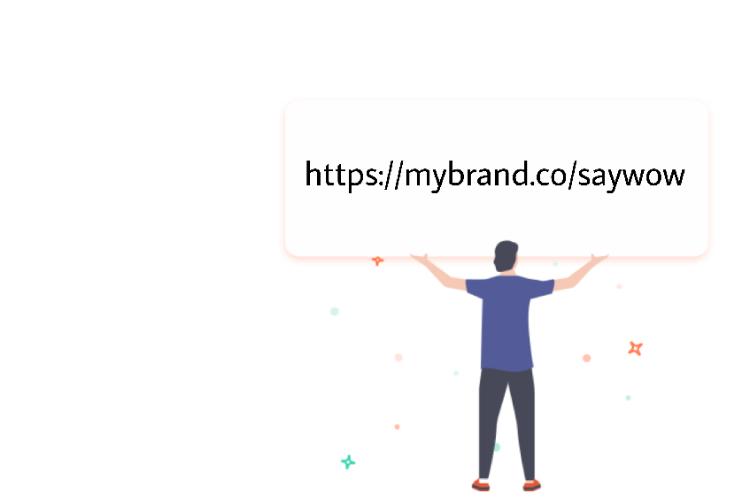Before sharing the link on social networks, think about how the link looks. Is it attractive to users? Will users want to click it or not? Eventually, will you click the link if you see it in a competitor’s blog?
Some spread mistakes of short links may prevent a successful promotion.
1. Using a generic domain.
The usage of a generic domain in your short links doesn’t bring as many successful results as if using a branded one.
Learn advantages of branded domains:
-
Branding. If you want to promote another brand, not yours, continue using a generic domain.
-
Recognition. The more users see your brand name, the more likely they will think of it while choosing a product trademark. Use short branded links to remind customers of your brand.
-
Trust. Build solid relations with customers by sharing qualitative content and customized links.
-
SEO. When creating a domain for your company, use the top- and second-level domains as descriptive words. For example, the domain for a delivery company might be “food.delivery.” The top-level domain “.com” is replaced by “.delivery.” This makes a chance to associate your brand with the keywords, which improve the website's SEO.
You can now add a custom domain to any link shorteners. Most of the services include this feature to a free plan.
2. Using a random URL slug.
Customers appreciate their time and want to read only qualitative content. However, how they will understand, whether the article is useful or not if it has a slug like “jfUdh.” This way, users prefer not to click a link at all than to face spam or unnecessary information.
When you share a link, think about the main idea of the content and the keywords, which may help users to find your article. Put those words to the URL slug. A customized slug will look like “domain-importance.” This is a brief and clear version. Customers may easily understand what the article is about and click a link with confidence.
3. Not using UTM-parameters.
The statistics often display the “direct” source of the click, which may refer to Twitter or Facebook. To clarify the click sources, add UTM tags. They allow you to find out which social network post, email marketing campaign, or advertisement campaign brought the most benefits. Data from UTM tagged links are sent to Google Analytics.
UTM tagged URL is too long. This is inconvenient and unattractive. If you want your link to look short, bright and memorable, you can use Short.cm. Insert the link with UTM into the service, and Short.cm answers you with a short version. Moreover, you can add UTM tags straight in Short.cm.
4. Not using redirect pages.
If the website visitor enters a short link with a non-existent alias/id, he or she will be redirected to the URL/domain you specify. This can be the URL of your main website.
The redirect pages let route users to the landing page, where visitors will find necessary information. The NOT FOUND page will just scared customers.
5. Using uppercase letters.
Avoid using uppercase letters, as some service may understand a “yourbrand.com/Slug-Importance” URL as completely different one: “yourbrand.com/Slug-importance” or “yourbrand.com/slug-importance.”
Conclusion
If you use shortening services to create attractive links, avoid making the mistakes. Use a branded domain, customize a slug, add UTM-parameters, input the redirection page, and use lowercase letters.
Short.cm shortening service provides you with all features mentioned above. You may try and then make a decision…
The article is about:
- Main nistakes while shortening.
- How to create short links to be successful in promotion.
- How to promote my brand?
- How short links help website SEO?
Read also:


